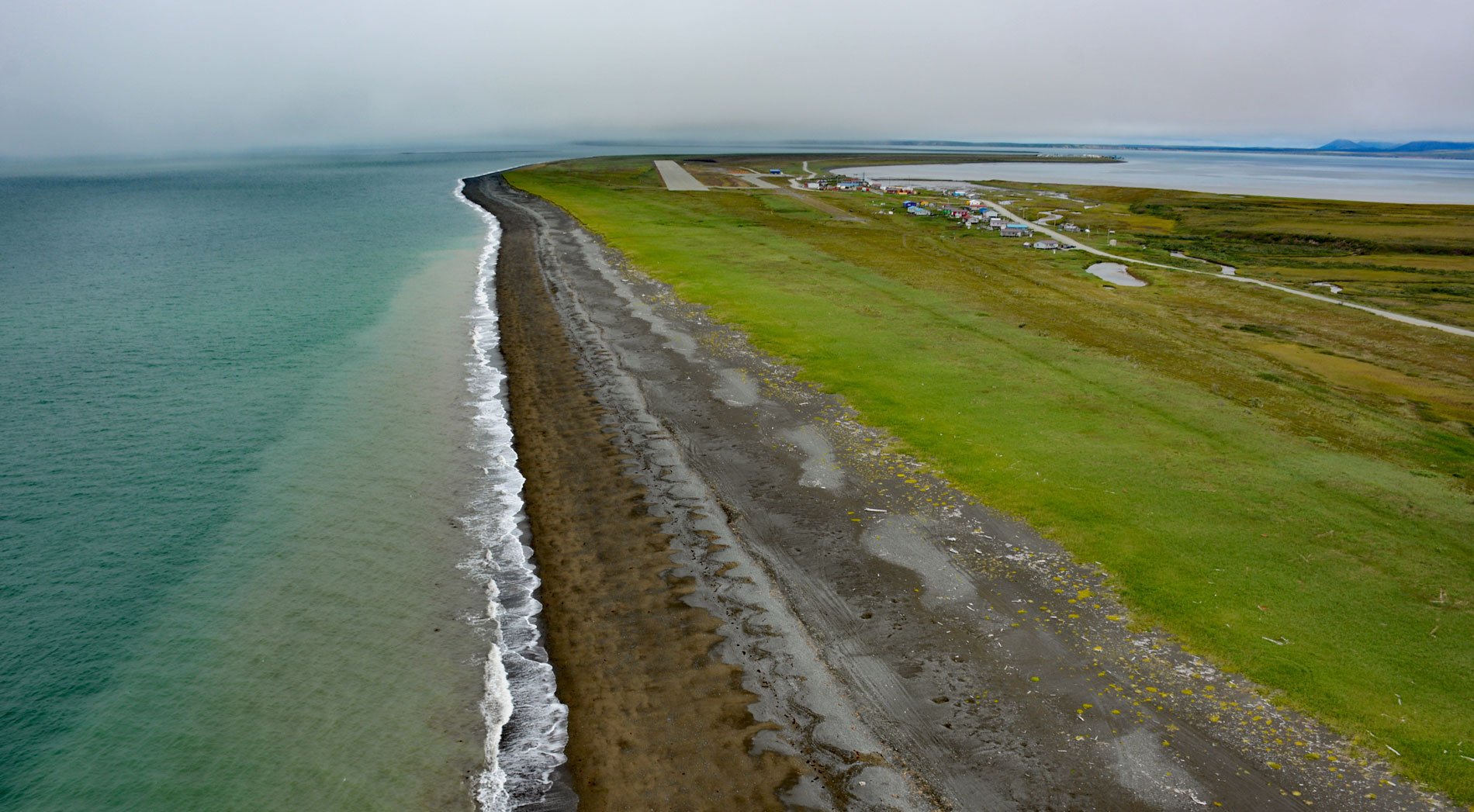Platinum is a mining community located on the Smalls River at the base of South Spit in Goodnews Bay, about 123 miles (198 km) south of Bethel and 11 miles (18 km) southwest of the village of Goodnews, Alaska. Goodnews Bay was originally called Imagpiguak by the Yup’ik meaning “Little Ocean”. In 1819, Russian explorers optimistically called the inlet Dobriek Vestei meaning “Good News”. In 1934, the present settlement of Platinum consisted of a single log cabin trading post and a few Yup’ik sod huts, remnants of the historical village of Arviik. The community of Platinum was named for the platinum deposits located about 8 miles (13 km) southwest in the Red Mountains within the Togiak National Wildlife Refuge. Platinum is an extremely rare heavy metal that is highly resistant to corrosion and used in catalytic converters, laboratory equipment, electrical contacts, and electrodes.
The discovery of platinum in the Goodnews Bay area was made in 1926 by Walter Smith, a Yup’ik from the former village of Kanakanagamute on Chagvan Bay. Hand-mining operations began in the summer of 1927 in the relatively shallow gravels of Clara Creek, Squirrel Creek, Fox Gulch, and Platinum Creek. All of these streams are tributaries of the Salmon River and emanate from the eastern flank of Red Mountain, a rust-colored ridge of rock that rises 2,000 feet (610 m) from the Bering Sea. From 1927 until 1933, 8-10 miners produced about 3,000 ounces (85 kg) of crude platinum or less than 500 ounces (14 kg) a year from these placer mines. In 1933, Northland Development Company acquired the leases and options and in 1934, they shipped into Goodnews Bay a dragline excavator, trestle sluice box, caterpillar tractor, and all the equipment and supplies necessary to establish a self-sufficient mining camp. The equipment and supplies were hauled approximately 25 miles (40 km) along the coast and around the western flank of Red Mountain, then up Salmon River to Squirrel Creek and the mining site. In 1937, the Goodnews Bay Mining Company acquired the assets of Northland Development Company and began large-scale commercial mining operations and Platinum became the latest Alaska boomtown with two trading posts, a roadhouse, and a post office. During World War II, the Alaska Territorial Guard safeguarded the mine against Japanese attack since it was the only primary producer of platinum in the United States.
The Goodnews Bay Mining Company operated continuously until 1979. The claims were mined intermittently throughout the 1980s by Hanson Industries and then lay dormant until the current operator, XS Platinum Limited, purchased the property in 2008. XS Platinum reprocessed the tailings from historical operations using a land-based facility to separate the metal from rock. The company also planned to mine virgin deposits, decommission the 1937 dredge, extending the airstrip using tailings as runway material, and update equipment. In 2010, the company conducted a shallow exploratory drilling program to potentially increase the size of the claim. In 2012, the mining operation stopped and the company entered extended foreclosure. In November 2014, both XS Platinum and five of its employees were indicted on several charges of violating the Clean Water Act and submitting false statements. The mine manager and plant manager pleaded guilty and were sentenced to community service and ordered to pay fines. The company chief operating officer was found guilty of two misdemeanors but not of several felony charges, and served a year in prison. As of 2017, two mining executives from Australia remain fugitives. Read more here and here. Explore more of Platinum and Goodnews Bay here:

